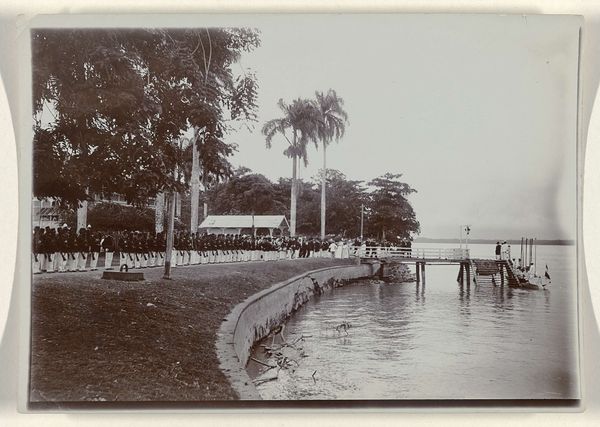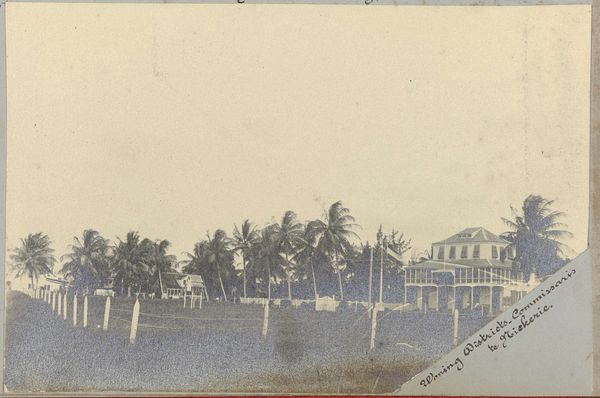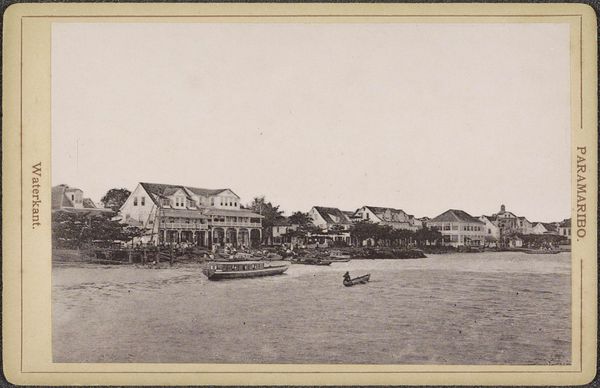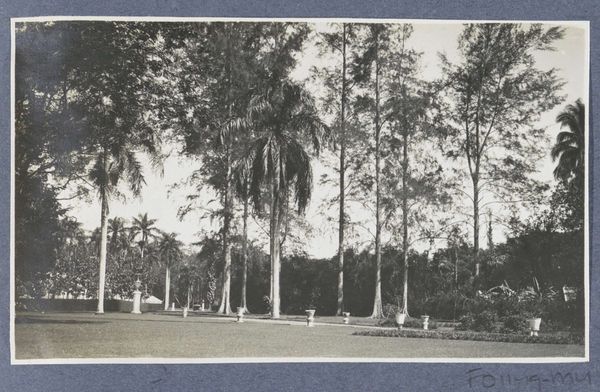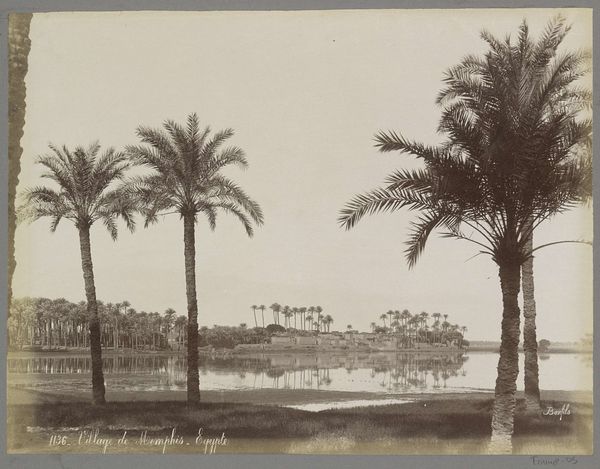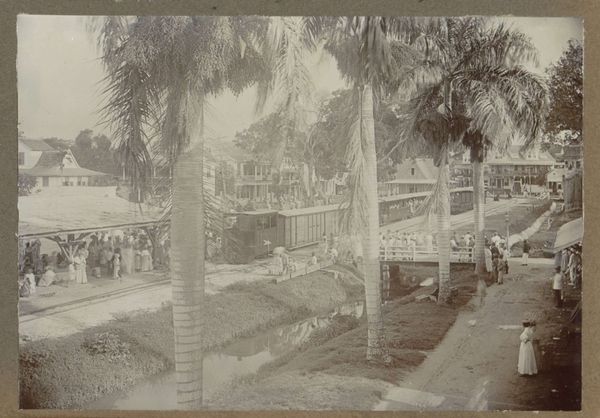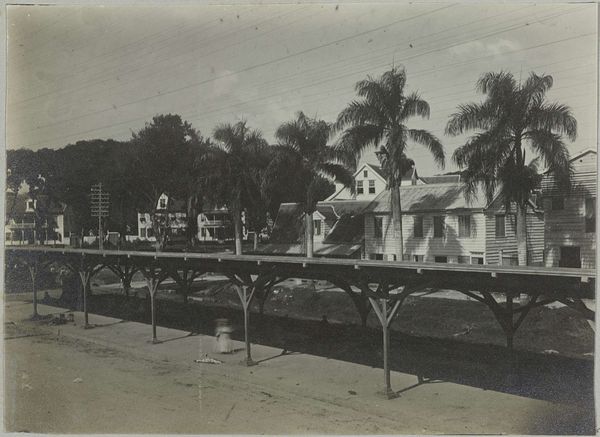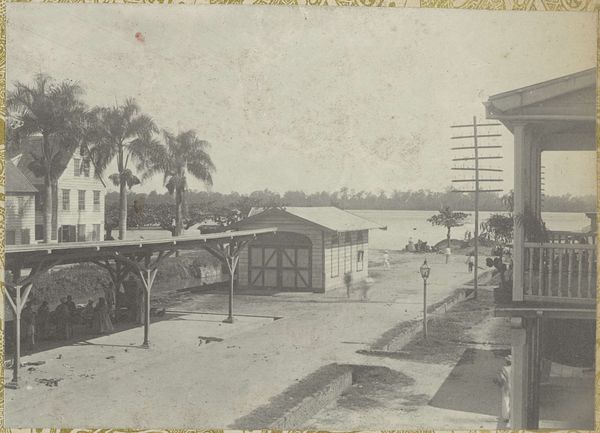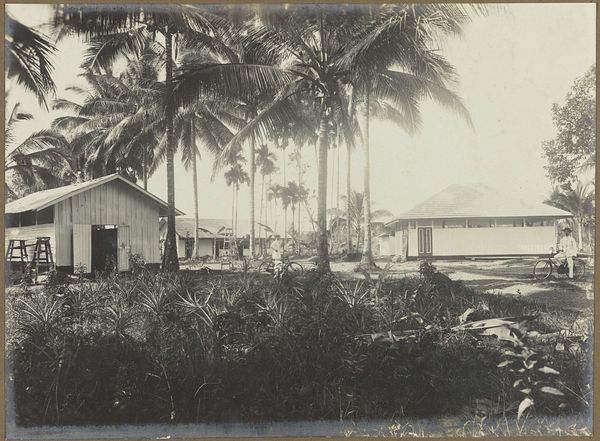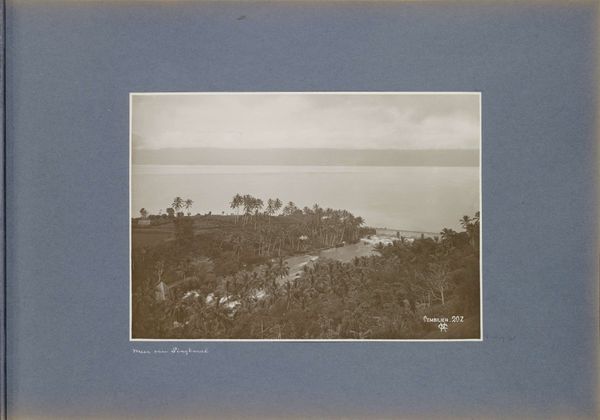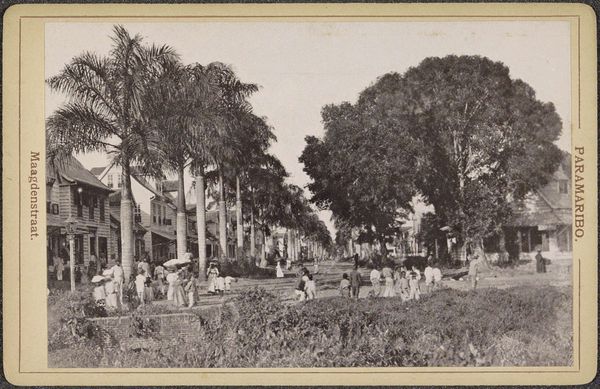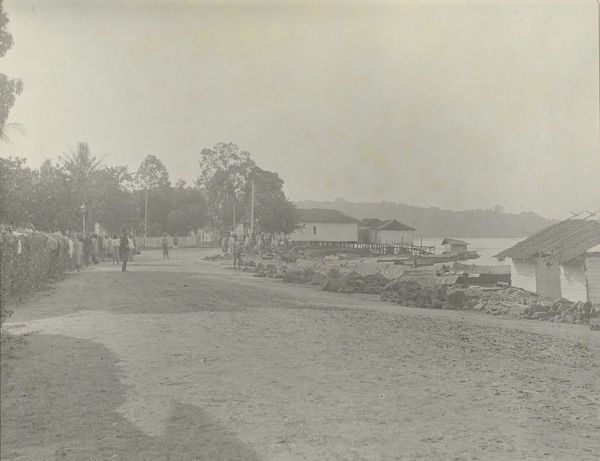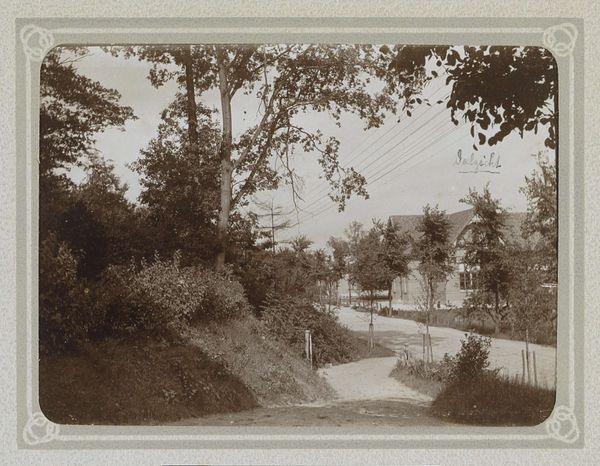
Fort Zeelandia en de Buitensociëteit in Paramaribo gezien vanaf een toren before 1927
0:00
0:00
print, photography
# print
#
landscape
#
river
#
etching
#
photography
#
cityscape
Dimensions: height 105 mm, width 165 mm
Copyright: Rijks Museum: Open Domain
Eugen Klein captured this photogravure of Fort Zeelandia and the Buitensociëteit in Paramaribo. This printmaking technique uses photography to transfer an image onto a metal plate, which is then etched with acid, and finally used to produce an image. The tones and textures of this image evoke the atmospheric conditions of Suriname. But beyond the image itself, consider how it came to be. The photogravure, as a mode of reproduction, was itself part of the colonial project. Such images helped to solidify the visual culture of empire, allowing people back in Europe to consume idealized visions of faraway places, without ever having to deal with the messy realities of colonialism. It’s easy to overlook the way that the means of image production played into social and political dynamics. But by appreciating this context, we can understand how even an apparently straightforward picture can be deeply implicated in the history of power.
Comments
No comments
Be the first to comment and join the conversation on the ultimate creative platform.
